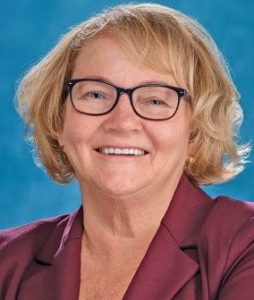
NEWPORT – The Oregon Coast Community College board intends to ask Lincoln County voters in May to approve a $32 million bond to replace one expiring next year.
The bond would be used to build a facility on its Newport campus to house new trades programs and make upgrades to facilities on that campus and at satellite campuses in Waldport and Lincoln City. The bond would be for no more than 21 years.
If voters approve, the bond would also help the college secure an $8.14 million matching grant from the state to build the workforce training center, it said in announcing the board’s upcoming decision.
The seven-member board heard a staff presentation on the bond and held a first reading of the ballot measure at its monthly meeting last week. It is now scheduled to formally approve the request at its next meeting, Feb. 15.
Voters approved an OCCC bond measure of 34 cents per $1,000 assessed property value in 2004 to build the college’s first facilities. As property values grew that rate has declined to an average of 24.4 cents and is expected to be 21 cents per $1,000 assessed value this year, the college said in a news release Friday.
With that, the owner of property assessed at $300,000 pays $73 a year to pay off the college bonds.
The new proposal calls for a bond with a tax rate of 26 cents per $1,000 assessed property value – and a yearly property tax bill of $78 — $5 more than the current amount.
The college also has a permanent tax base of 17.6 cents per $1,000 assessed value that provides yearly operating funds. That costs the owner of property assessed at $300,000 about $53 a year.

College president Birgitte Ryslinge said in the news release that expanding the ability to offer cutting-edge workforce training in a variety of trades has long been a goal of OCCC leadership.
“Since joining OCCC in 2014, I have often been asked ‘When will the college offer more training opportunities for students looking to work in the trades?’” she said. “After careful examination of employer and student demand, we concluded this was absolutely an area where we needed to grow. And we do not have the specialized facilities needed to house complete trades programs.”
Ryslinge said the college has secured an $8.14 million commitment from the state to help pay for such facilities. But the college won’t get the grant if it does not have local funding for the project, she said.

Long term goal
In its news release, the college said the trades facility project was first identified in 2017 when it sought the state grant. At its annual retreat last September, the board set a goal of securing the matching funds in 2023.
Dan Lara, OCCC’s vice president for academic affairs, said the trades facility will be designed “as a cutting-edge, flexible, industrial space.”

“Virtually all the fixtures in this facility will be on wheels so that classrooms, workshops, and other learning spaces can flex and adapt over time to meet changing needs – the needs of our students and our county’s employers,” Lara said in the college’s news release.
Board chair Chris Chandler said the design process will involve engagement with local industry, employers, and the community.
If approved by voters, the proceeds from the $32 million bond would cover the cost of the new industrial training facility – estimated to cost $25 million — as well as safety, technology, and other needed upgrades to facilities in Lincoln City, Newport, and Waldport. The college also intends to maintain and grow the welding training partnership at the Port of Toledo.
In its announcement Friday, the college also said it has begun discussion with emergency preparedness agencies on projects that also might be funded by the bond. Those include designing the parking lot for the new building on the Newport campus to serve as an emergency helipad for heavy rotor aircraft in the event of a large natural disaster. It is also considering a dual-fuel generator coupled with a low-power FM station at its Lincoln City campus to support city and county efforts to communicate with the public and manage events such as the evacuation caused by the 2020 Echo Mountain fires.
OCCC evolution
Oregon Coast Community College was formed in 1987, but operated under the charters of other Oregon colleges until 2020 when it became an independent institution with the ability to make its own financial and academic decisions. With a fall 2022 headcount of 908 students, it is the fourth smallest of Oregon’s 17 community colleges.
After getting that independent accreditation, responding to the pandemic and expanding its teaching, early childhood and health programs, Ryslinge said the college can now focus on expanding its trades and workforce programs.
“… the college has built the staffing and systems to function as a truly independent college, no longer dependent on other community colleges for some of our operations,” she said. “We can and should focus on securing what is needed for students, families and the employers of Lincoln County.”



Ummm. No. OCCC can live off the tax base they already collect from property owners.
For the past several years two buildings already owned by the college have remained mostly empty. The Waldport Campus is empty most of the time, now rented to a nonprofit and was rented to Lincoln County School District during the pandemic. Lincoln City is used more but mostly for community education. Community education is great for retirees wanting art, crafts, photography training, cooking and fly fishing. It does little for workforce training. English as a second language and GED don’t fill the mostly vacant building located in Lincoln City.
Oregon community college enrollment drops again is the latest headline. Oregon’s community colleges statewide had 85,000 students enrolled for the fall term, according to state data. That’s down 3.6% from 2021 – and off more than 26% compared to enrollment before the pandemic.
$32 million is how much per student looking for these trades classes? They already have a bond we pay on our property tax for the current building they don’t use. Many programs have dropped programs due to lack of enrollment. Recently the EMT class drop for lack of enrollment, and criminal justice gone a few years ago lack of enrollment. What else is on the chopping block? Furthermore, so many classes are online now. What is the need for all this new space, can’t they continue holding classes in community building like the Port or Toledo and high school buildings they currently use.